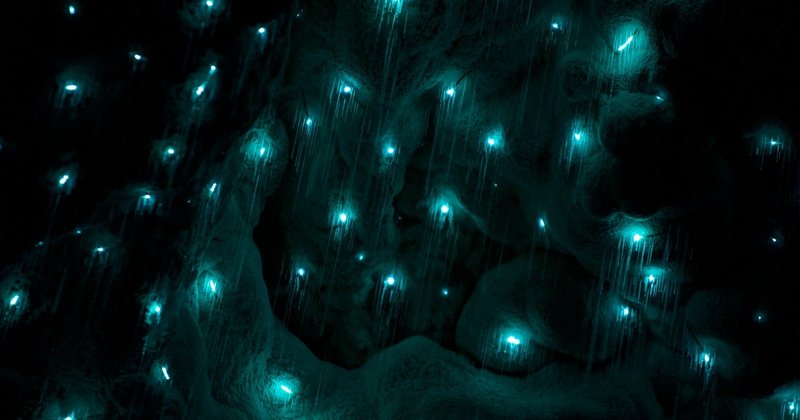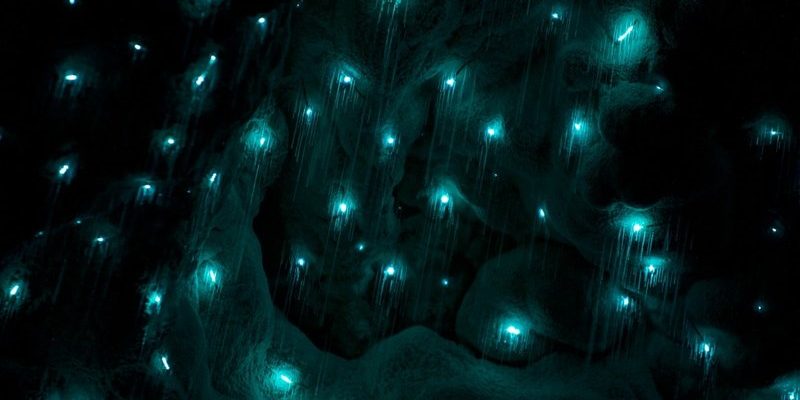
Glowworms, primarily found in places like New Zealand and Australia, create a magical ambiance in caves, lighting up the darkness with their bioluminescent glow. But what makes these little critters tick? The answer lies in the air around them, particularly the ideal humidity levels. So, let’s dive into the fascinating world of glowworms and their perfect environment, one that keeps them glowing brightly.
What Are Glowworms and Why Do They Need Humidity?
Glowworms are actually the larvae of certain types of flies, specifically the *Arachnocampa* species. They have this incredible ability to produce light through a process called bioluminescence. It’s like their own special lantern in the dark! But, to keep shining, they need a specific environment—one that’s rich in moisture. When the humidity levels in their cave habitat drop too low, their glow can dim, and their chances of survival decrease significantly.
Here’s the thing: think of humidity like the air we breathe. Just as we need a perfect balance of oxygen and carbon dioxide, glowworms rely on humidity to maintain their habitat. The right levels help keep their silk threads sticky and effective for catching prey, which in turn helps them grow and thrive. Without enough moisture, their fragile ecosystem might collapse.
So, what exactly are those magical humidity levels? Generally, glowworms thrive in environments where humidity hovers between 80% and 100%. This is often the case in the dark, damp caves they call home. Environments like these are crucial for their growth and survival, creating a balance that supports not only glowworms but a whole cast of cave-dwelling organisms.
The Importance of Constant Humidity Levels
Maintaining constant humidity levels is just as important as achieving the right percentage. Fluctuations can lead to stress for glowworms, much like how a sudden heatwave can make us feel exhausted and irritable. High humidity levels can encourage the growth of mold and fungi, which could potentially harm glowworms if it outcompetes them for resources. Conversely, if things get too dry, they may struggle to secret their silk adequately.
In a cave environment, humidity is often naturally maintained due to the lack of sunlight and ventilation. Water seeping through rocks and the moisture from the cave’s walls help to keep the air consistently moist. This consistency is vital for growth and reproduction. It’s almost like these insects have their own little climate system designed just for them.
To ensure these conditions are met, cave systems must be carefully monitored. Changes in temperature or disruptions from outside sources (like human activity) can alter the all-important humidity levels. This is why many conservation efforts focus on protecting these unique ecosystems—it’s about maintaining a delicate balance.
How to Measure Humidity in Caves
If you’re curious about the humidity levels in a cave, there are a few methods to measure them effectively. You might be wondering how scientists and researchers do this. Here are some common tools they use:
- Hygrometers: Simple gadgets that measure humidity levels in the air. They can be digital or analog and provide real-time readings.
- Data Loggers: More advanced devices that record humidity over time. This can help researchers spot trends and fluctuations.
- Psychrometers: These use two thermometers—a wet bulb and a dry bulb—to calculate relative humidity based on the difference in temperature.
Regular monitoring is key. When researchers take readings, they can manage and protect the habitat better, ensuring conditions remain ideal for glowworms. Understanding these levels helps in conservation planning and efforts to maintain the delicate balance in their ecosystem.
The Ideal Range: Why 80%-100% Humidity Matters
You may be scratching your head, asking, “Why the specific number?” It turns out there’s a good reason for that. When humidity levels sit between 80% and 100%, it creates a lush environment where glowworms can effectively trap food with their silk threads. At this range, the air is saturated enough that it prevents dryness, allowing glowworms to thrive.
Let’s think about it this way: picture a sponge. When it’s too dry, it shrivels up and can’t hold much water. But when it’s soaked, it expands and can absorb even more. In a similar manner, glowworms need that saturated air to fully expand their silk webs and catch unsuspecting prey like small flies. Without those ideal levels, this entire feeding mechanism could falter.
Moreover, this humidity is essential for their lifecycle. Larvae need moisture to develop properly, and too little humidity can lead to stunted growth or even death. Ensuring that these levels stay constant is crucial for maintaining their populations and the health of the ecosystem as a whole.
How Human Activity Affects Cave Humidity
Now, let’s talk about us—the humans. It’s no secret that we’ve had an impact on many natural habitats. When it comes to caves, human activity can disrupt those sensitive humidity levels in several ways. For instance, increased foot traffic and pollution can lead to changes in airflow, which in turn can dry things out.
Moreover, things like drilling or mining can also alter water flow patterns. Simply put, if we change how water enters or exits a cave, we can change the humidity levels. Add to this the fact that our activities can introduce foreign materials, which might compete with natural cave organisms.
Education is vital here. By recognizing the impact we can have on caves, we can make more informed choices about how we interact with these environments. Conservation efforts often include measures to minimize human impact, like setting guidelines for visitation or creating protected areas. Every little effort helps!
Maintaining Habitats for Glowworms
So, how can we ensure that glowworms continue to thrive in their habitats? First, public awareness and education are crucial. By informing people about the importance of cave ecosystems, we can help protect these environments.
Additionally, establishing guidelines for cave tours and limiting visitor numbers can go a long way in minimizing human impact. Conservationists often collaborate with local communities to create sustainable tourism practices that benefit both the environment and the economy. Think of it as a partnership where everyone wins.
Regular monitoring of humidity levels ensures that any changes can be addressed promptly. With tools like hygrometers and data loggers, conservationists can keep a close eye on conditions, adjusting any necessary practices to maintain the ideal humidity levels for glowworms.
Glowworms are a fantastic example of how interconnected our world is. Humidity levels might seem like a minor detail, but for these little luminescent beings, they’re everything. By understanding and maintaining the right humidity, we not only support glowworms but also preserve the delicate ecosystems that sustain them.
As we learn more about these fascinating creatures and their habitats, it’s essential for us to approach conservation with care and respect. By valuing and protecting the unique conditions that thrive in caves, we ensure that future generations can enjoy the wonder of glowworms lighting up the darkness, just as they have for millennia. So, the next time you think of caves, remember the unseen dance of humidity that makes it all possible.

